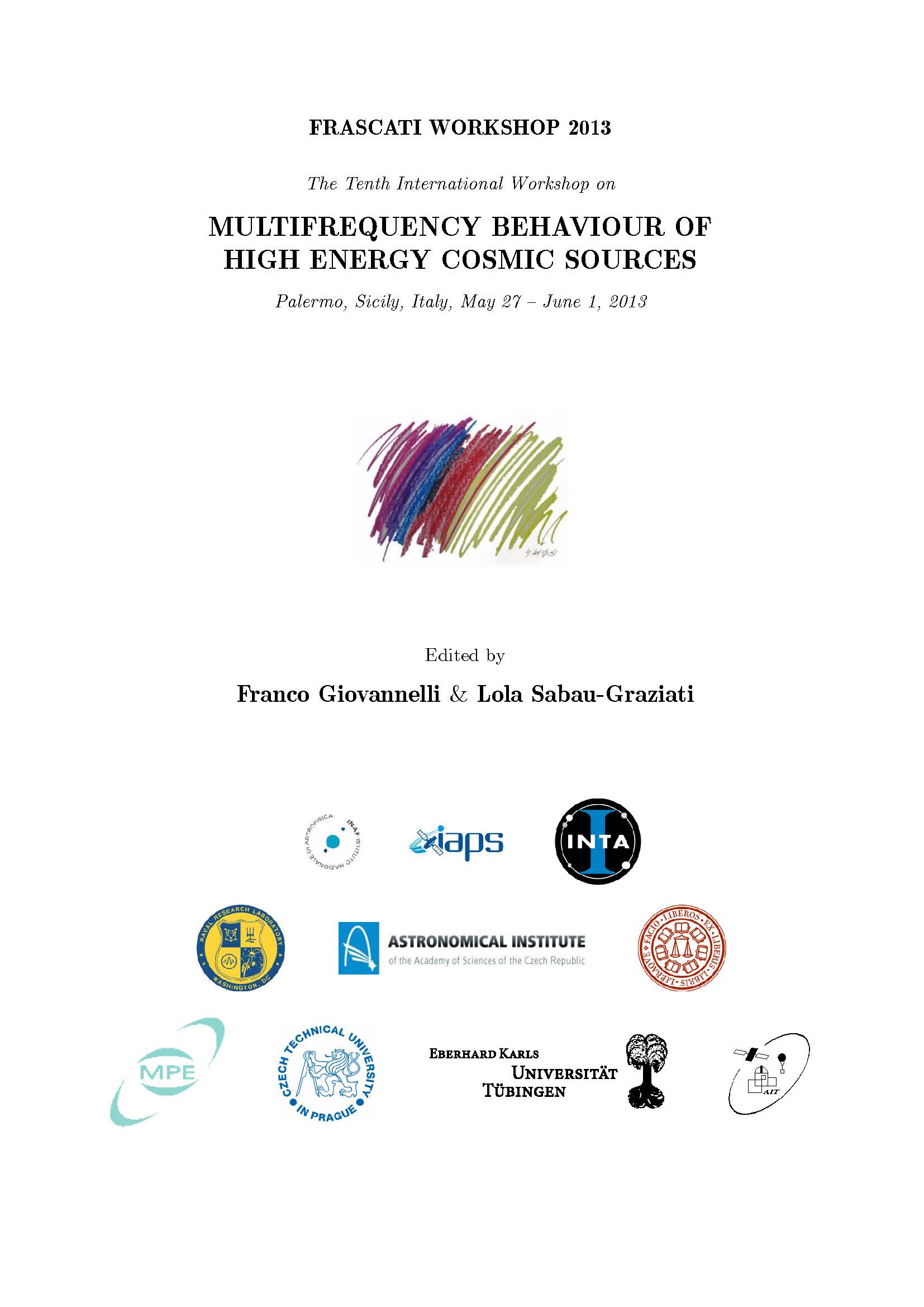Origin of X-ray Spectral Variation and the Seemingly Broad Iron-Line Spectral Feature in Seyfert Galaxies
DOI:
https://doi.org/10.14311/APP.2014.01.0146Abstract
We present systematic X-ray data analysis of the Seyfert galaxies observed by Suzaku to study origin of their hard X-ray (2 - 40 keV) variations. In particular, we examine if the "Variable Partial Covering (VPC) model" proposed by Miyakawa, Ebisawa and Inoue (2012), which was successful to explain spectral variations of MCG{6-30-15, is also valid for other Seyfert galaxies or not. In this model, intrinsic X-ray luminosity of the AGN is not signicantly variable, and most observed flux and spectral variations are caused by change of the geometrical covering fraction of the extended X-ray source by ionized absorbing clouds in the line of sight. We found that the observed flux and spectral variations of 20 targets in addition to MCG{6-30-15 are successfully explained by the VPC model. The transmitted spectral component through the absorbing clouds has a characteristics spectral feature of the ionized iron K-edge, which is considered to be the origin of the seemingly broad iron-line feature commonly observed in Seyfert galaxies. Variation of the partial covering fraction of the constant X-ray luminosity source causes such an anti-correlation between the direct (non-obscured) component and the transmitted (obscured) component, that cancels their variations each other. The cancellation works most effectively at the energy band where intensities of the two components are the closest to each other, namely, just below the iron K-edge. This explains the signicantly small fractional variations in the iron K-energy band, another well-known observational characteristic of Seyfert galaxies.Downloads
Published
Issue
Section
License
Copyright notice
Authors who publish with this journal agree to the following terms:
1. Authors retain copyright and grant the journal the right of the first publication with the work simultaneously licensed under a Creative Commons Attribution License that allows others to share the work with an acknowledgement of the work's authorship and initial publication in this journal.
2. Authors are able to enter into separate, additional contractual arrangements for the non-exclusive distribution of the journal's published version of the work (e.g., to post it to an institutional repository or to publish it in a book), with an acknowledgement of its initial publication in this journal.
3. Authors are permitted and encouraged to post their work online (e.g., in institutional repositories or on their website) prior to and during the submission process, as it can lead to productive exchanges as well as earlier and greater citation of the published work (See The Effect of Open Access).


